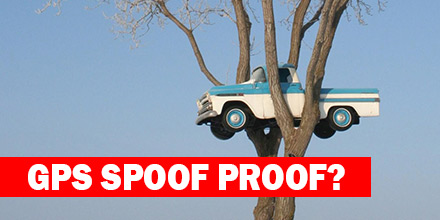
The VN-300 is now the primary source for telemetry data for Master Class race planes participating in Red Bull's Air Race World Championship.
The 2018 inaugural season event, in Abu Dhabi, marked the first time all 14 aircraft used the VN-300.
The VN-300 provides real-time telemetry data which teams use for a variety of functions.
About the Red Bull Air Race
Created in 2003, the Red Bull Air Race World Championship features the world's best race pilots. It is a pure motorsport competition combining speed, precision and skill.
Using the fastest, most agile, lightweight racing planes, pilots hit speeds of 370 km/h. Pilots endure forces up to 10 G as they navigate a low-level slalom track marked by 25-meter-high, air-filled pylons. Pilots receive time penalties for various infractions. Such penalties include: hitting pylons, incorrectly passing through the Air Gate, as well as others.
Spectators need a reference to see the difference between the pilots’ lines and speed through the racetrack. As such, Red Bull Air Race Live TV utilizes an augmented reality (AR) solution known as the Ghost Plane. The AR displays the trajectory of the pilots’ runs and provides real-time comparison in the head-to-head rounds and finals.
The Ghost Plane is driven by the position, velocity and attitude data gathered during flight from the on-board INS. Critical to the success of the Ghost Plane is the accuracy of the telemetry data. And, given the high dynamics experienced during flight, is difficult to obtain.
Importance of accurate telemetry data
For example, when a plane races through a chicane and into a vertical turn maneuver, it loses GPS signals. As such, until GPS is reacquired, the INS relies solely on the inertial sensors to provide position and velocity.
“We evaluated several different inertial navigation systems. We struggled to find one that performed in our dynamics. VectorNav’s VN-300 was the only product able to deliver the attitude, position and velocity data accuracy we require. And, it did this out of the box, no customization required. The sensor is really amazing,” said Alvaro Navas, Sport Technical Manager for the Red Bull Air Race.
VN-300
Weighing less than 30 grams, the VectorNav VN-300 is the world’s smallest dual antenna GNSS-aided INS. It is used in many applications: from autonomous vehicles to antenna pointing for satellite communication and aerial surveillance.
“We are really excited to work with Red Bull Air Race,” said Gordon Hain, VectorNav Product Manager. “We provide accurate data for the race judges and spectators and we provide valuable information to pilots and tacticians. With the VectorNav data in hand they can compare actual flight trajectories with their simulations to find areas for improvement. We look forward to working with Red Bull Air Race in the 2018 season and beyond.”
About VectorNav Technologies
VectorNav Technologies is the leading innovator and manufacturer of embedded navigation solutions using the latest in MEMS inertial sensor and GPS/GNSS technology. Since its founding in 2008, VectorNav has provided systems integrators in the military, aerospace, marine, and robotics industries around the world with SWaP-C optimized, high-performance navigation systems.
Furthermore, VectorNav has unique expertise in applying the digital filtering and sensor calibration techniques that have multiple decades of heritage in aerospace applications to the state of-the-art in MEMS inertial and GPS/GNSS technology.
About Red Bull Air Race
Created in 2003, the Red Bull Air Race World Championship has held more than 80 races around the globe. The Red Bull Air Race World Championship features the world’s best race pilots in a pure motorsport competition that combines speed, precision and skill.
In 2014, the Challenger Cup began to help the next generation of pilots develop the skills needed for potential advancement to the Master Class that vies for the World Championship.
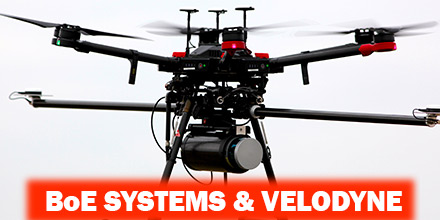 Late last year, Velodyne LiDAR Inc., the world leader in 3D vision systems for autonomous vehicles, created a partnership with BoE Systems.
Velodyne integrated its VLP-16 Puck and Puck LITE 3D LiDAR sensors into BoE Systems’ UAV fleet for geospatial data collection and analysis.
With this integration, BoE Systems now offers full 360° imaging of geography and equipment that serve a multitude of industries.
These services meet a growing need for quick, safe, and accurate aerial inspections. Such industries, include: transportation, utilities, telecommunications/infrastructure, construction, aggregate, forestry, and agriculture.
Late last year, Velodyne LiDAR Inc., the world leader in 3D vision systems for autonomous vehicles, created a partnership with BoE Systems.
Velodyne integrated its VLP-16 Puck and Puck LITE 3D LiDAR sensors into BoE Systems’ UAV fleet for geospatial data collection and analysis.
With this integration, BoE Systems now offers full 360° imaging of geography and equipment that serve a multitude of industries.
These services meet a growing need for quick, safe, and accurate aerial inspections. Such industries, include: transportation, utilities, telecommunications/infrastructure, construction, aggregate, forestry, and agriculture.

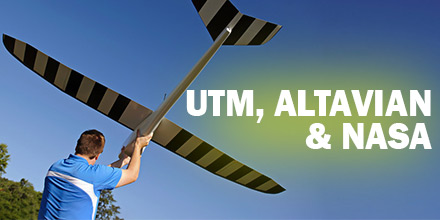 Altavian, recently announced that it is working with Northern Plains UAS Test Site (NPUASTS).
The reason?
Altavian is helping to test NASA's Unmanned aircraft systems Traffic Management (UTM) system.
Altavian and NPUASTS are developing technology related to UTM. Additionally, a third partner, iSight RPV Services, is providing flight test services on the Nova F7200 sUAS.
Altavian, recently announced that it is working with Northern Plains UAS Test Site (NPUASTS).
The reason?
Altavian is helping to test NASA's Unmanned aircraft systems Traffic Management (UTM) system.
Altavian and NPUASTS are developing technology related to UTM. Additionally, a third partner, iSight RPV Services, is providing flight test services on the Nova F7200 sUAS.
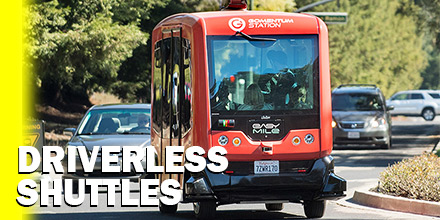 On March 6, an EasyMile autonomous shuttle bus became the first driverless vehicle to operate on California roads. This marks the first time the California Department of Motor Vehicles (DMV) allowed a shared autonomous vehicle to travel on public roads.
“This is the first driverless shuttle in California that DMV has granted this permission,” said Jessica Gonzalez, DMV spokesperson. “It's a really big deal.”
Testing centers around Bishop Ranch, the largest mixed-use business community in San Ramon, California.
On March 6, an EasyMile autonomous shuttle bus became the first driverless vehicle to operate on California roads. This marks the first time the California Department of Motor Vehicles (DMV) allowed a shared autonomous vehicle to travel on public roads.
“This is the first driverless shuttle in California that DMV has granted this permission,” said Jessica Gonzalez, DMV spokesperson. “It's a really big deal.”
Testing centers around Bishop Ranch, the largest mixed-use business community in San Ramon, California.

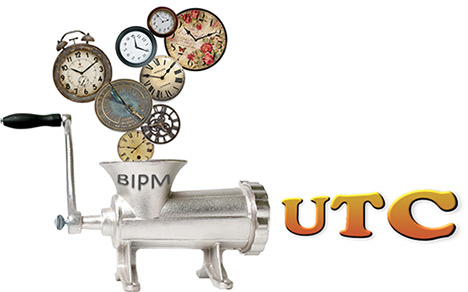
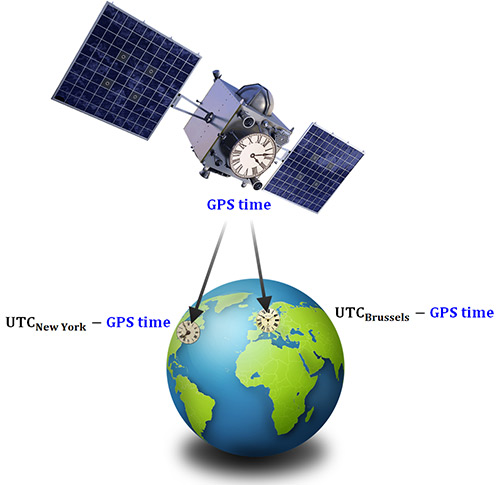

 The VN-300 is now the primary source for telemetry data for Master Class race planes participating in Red Bull's Air Race World Championship.
The 2018 inaugural season event, in Abu Dhabi, marked the first time all 14 aircraft used the VN-300.
The VN-300 provides real-time telemetry data which teams use for a variety of functions.
The VN-300 is now the primary source for telemetry data for Master Class race planes participating in Red Bull's Air Race World Championship.
The 2018 inaugural season event, in Abu Dhabi, marked the first time all 14 aircraft used the VN-300.
The VN-300 provides real-time telemetry data which teams use for a variety of functions.
